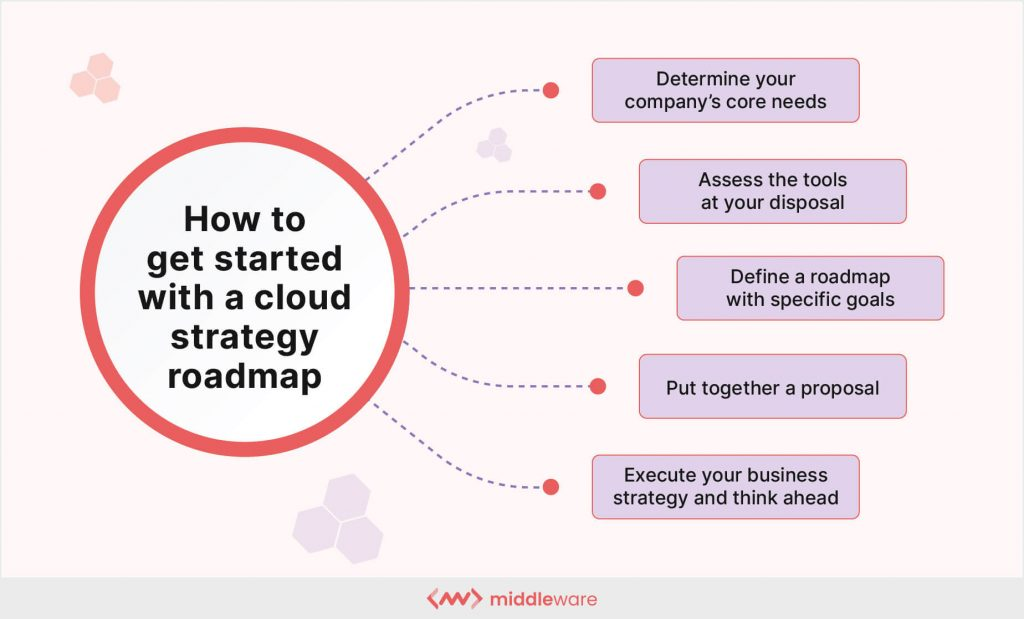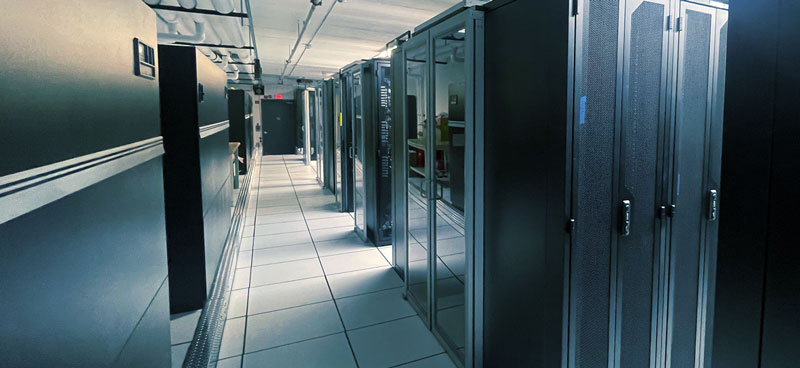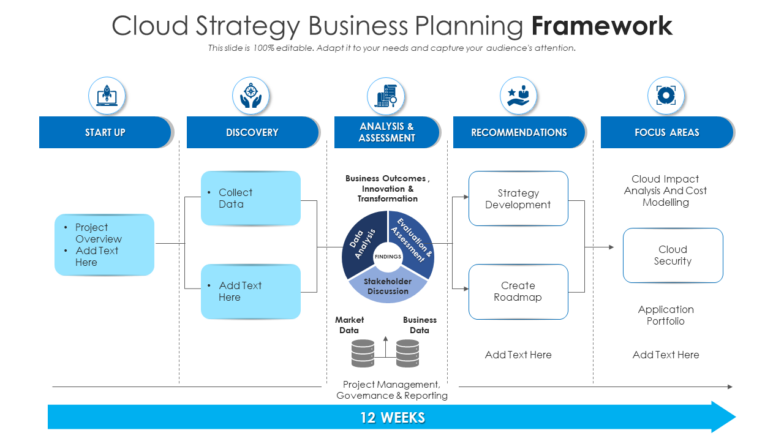In the ever-evolving landscape of technology, cloud computing strategies have emerged as a pivotal component for businesses aiming to enhance their operational efficiency. As companies like Microsoft work to integrate Windows for cloud-connected devices, the synergy between software and hardware becomes increasingly critical. Simultaneously, Intel is redefining its microprocessor development to support an expanding array of devices and the growing server demand associated with cloud applications. By adopting a hybrid IT model, organizations can effectively balance on-premises IT with cloud services, showcasing a shift towards modern infrastructure solutions. Embracing these cloud computing strategies not only benefits large enterprises but also opens doors for innovative startups eager to leverage the power of cloud technology.
The integration of cloud technologies into organizational frameworks presents exciting opportunities for businesses striving to optimize their operations. These contemporary approaches, often referred to as cloud-based solutions, encapsulate a spectrum of strategies that empower enterprises to leverage state-of-the-art capabilities in data storage and processing. With big players like Microsoft enhancing their operating systems for interconnected devices and Intel advancing its chip designs for optimal performance, the hybrid IT model has gained traction as a favorite choice among businesses. This model allows for a combination of public and private cloud services, catering to diverse operational needs while ensuring data security and privacy. As the demand for robust server infrastructure continues to rise, organizations must adapt their IT strategies to remain competitive in this dynamic environment.
Exploring Cloud Computing Strategies for Modern Enterprises
In the rapidly evolving digital landscape, businesses are recognizing the need to adopt effective cloud computing strategies that streamline operations and maximize efficiency. A pivotal aspect of this transition involves leveraging cloud-connected devices, enabling employees to access and process information seamlessly from anywhere. Companies like Microsoft are innovating their offerings by re-imagining the Windows operating system to optimize performance on these devices, ensuring higher productivity and flexibility. This strategic shift empowers enterprises to tap into the full potential of cloud applications, which can be hosted internally or accessed as services from providers.
Moreover, successful cloud computing strategies extend beyond just device optimization. They demand a thorough understanding of infrastructural needs and the microprocessors powering these systems. For instance, Intel is rethinking its microprocessor design, not only to enhance server capabilities but also to cater to mobile and cloud-based processing. By focusing on cutting-edge technologies such as the Xeon processor E5-2600 series, Intel is aligning its products with the growing server demand associated with the rise of cloud services. This creates a symbiotic relationship between software innovations from companies like Microsoft and hardware advancements from companies like Intel.
The Role of Hybrid IT in Driving Cloud Adoption
In today’s business environment, the concept of Hybrid IT is garnering increasing attention as organizations seek to combine the benefits of both public and private cloud services. Hybrid IT integrates internal infrastructures with external cloud solutions, enabling businesses to utilize resources more effectively while ensuring critical data remains secure. Analysts, including Gartner, emphasize that this model allows organizations to optimize their IT capabilities and offers flexibility when managing workloads across various environments. By gradually adopting Hybrid IT, companies can align their operational needs with emerging cloud technologies, ensuring they stay competitive.
The transition to a Hybrid IT model, however, is not without its challenges. Organizations must recognize the evolving role of IT professionals, who now need to possess a comprehensive understanding of both internal systems and external cloud offerings. As employees increasingly rely on consumer cloud applications, the responsibility falls on IT departments to facilitate a smooth integration process. Failure to adapt could lead to scenarios where employees seek alternative solutions outside the corporate infrastructure, risking security and compliance. Thus, embracing a Hybrid IT approach not only addresses employee needs but also aligns with broader cloud computing strategies aimed at fostering efficiency and security.
Leveraging Server Demand Through Cloud Services
The burgeoning demand for cloud services is closely tied to the increasing reliance on servers to manage heightened processing needs. Companies must ensure that their server environments can accommodate the data loads generated by cloud-connected devices, resulting in substantial investment in reliable and powerful server technologies. As indicated by Gartner’s research, global server revenue saw impressive growth driven by the rise of mega datacenters and a surge in client devices like smartphones and tablets. This demand presents an extraordinary opportunity for manufacturers such as Intel, which leads in x86 chip production, to provide innovative server solutions tailored to the cloud.
Intel’s introduction of advanced microprocessors, like the Xeon E5-2600, highlights a significant step towards enhancing server performance in cloud computing environments. These processors are engineered to handle increased data traffic seamlessly while optimizing power consumption. This capability not only reinforces the robustness of data handling but also helps in decreasing overall operational costs for businesses. By investing in such powerful server technologies, organizations can position themselves to provide high-performance cloud services that meet the needs of today’s consumers and businesses alike.
The Future of Personal Computing in a Cloud-Centric World
The future of personal computing is being reshaped by the rise of cloud computing strategies that prioritize accessibility and efficiency. As traditional devices transition to cloud-connected platforms, users can expect a more integrated and fluid experience across various devices. Microsoft’s initiative to enhance Windows performance on cloud-based systems signifies a shift in how personal computing is perceived. This evolution not only accommodates changing consumer behaviors but also opens up new avenues for software applications that capitalize on the benefits of cloud connectivity.
Furthermore, with the growing diversity of cloud-connected devices, the collaboration between software giants like Microsoft and hardware innovators like Intel becomes increasingly critical. As companies invest in optimizing their hardware for the cloud, they also create opportunities for developers to build applications that provide unique functionalities tailored for this ecosystem. The emphasis on multi-architecture support signifies a major leap forward, enabling consumers to enjoy a consistent user experience, regardless of the devices they employ. This transformation heralds a new age of computing where flexibility and cloud integration will dominate.
Intel’s Innovations in Microprocessors for Cloud Applications
Intel continues to be at the forefront of developing microprocessors that effectively support cloud applications and services. The company has recognized the growing shift towards cloud-based solutions and has focused on creating processors designed to optimize performance in server environments. With significant hardware advancements like the Xeon processor E5-2600 series, Intel aims to empower cloud service providers with robust infrastructure able to handle fluctuating demands. This commitment to innovation ensures that Intel remains a key player in the cloud computing landscape.
Furthermore, Intel’s efforts to enhance the efficiency of its microprocessors demonstrates an understanding of the unique needs of cloud environments. The capability of Intel processors to manage multi-threaded workloads allows for faster processing times, ultimately improving the overall performance of applications hosted on cloud platforms. This not only boosts the capabilities of the cloud service providers but also ensures that end-users experience quicker access and improved functionality. As cloud adoption grows, Intel’s dedicated focus on developing sophisticated microprocessors will play a critical role in shaping the future of cloud computing.
The Impact of Cloud-Connected Devices on Modern IT Strategies
As businesses increasingly utilize cloud-connected devices, the impact on IT strategies is profound. Companies must adapt their infrastructures to support a myriad of devices that access resources remotely. This evolution prompts IT departments to reconsider traditional approaches to support and security, emphasizing the need for streamlined integration of cloud services. A well-executed strategy to embrace these emerging technologies ensures that businesses can harness the full potential of cloud computing while maintaining control over their IT environment.
Moreover, the rise of cloud-connected devices compels companies to rethink their customer engagement strategies. With consumers using diverse devices to access cloud services, brands are tasked with delivering a seamless experience regardless of the platform. This customer-centric focus becomes an integral part of IT strategies, as organizations aim to enhance user satisfaction and loyalty in an increasingly competitive marketplace. Overall, embracing cloud-connected devices ultimately encourages organizations to innovate and optimize their IT landscapes in response to evolving consumer needs.
Microsoft’s Vision for Cloud-Connected Personal Computing
Microsoft’s vision for cloud-connected personal computing marks a significant departure from traditional desktop paradigms. By re-imagining Windows for cloud environments, the company not only caters to existing user bases but also positions itself to compete in an evolving market where mobility and cloud interaction are paramount. With a focus on enhancing user experience across devices, Microsoft is paving the way for a future where applications and services are seamlessly integrated into daily operations, empowering users to work efficiently from virtually anywhere.
Furthermore, Microsoft’s commitment to supporting an array of chip architectures aligns perfectly with the dynamics of cloud computing. The ability to run Windows on multiple platforms not only boosts flexibility for users but also enhances Microsoft’s appeal to hardware manufacturers looking to optimize their devices for cloud applications. As the market continues to demand more versatility and power from personal computing, Microsoft’s strategic focus on cloud-connected devices will undoubtedly shape the future of computing as we know it.
Navigating Power Consumption Challenges in Cloud Processing
As the demand for cloud services increases, so does the challenge of managing power consumption, particularly in the context of data centers. Organizations are striving to enhance efficiency while balancing the energy requirements of running vast server farms. This not only affects operational costs but also has environmental implications, pressing companies to consider sustainability in their cloud strategies. Innovative microprocessor designs, such as those developed by Intel, aim to address these concerns by improving performance while minimizing power usage.
In addressing power consumption challenges, Intel has introduced advanced microprocessors that leverage energy-efficient technologies. Optimizing cache technology and memory support allows data centers to maximize processing while reducing energy expenditure. This strategic focus enables businesses to adopt cloud applications without incurring excessive operational costs associated with energy consumption. Ultimately, navigating the intersection of performance and sustainability will be crucial as organizations increasingly rely on cloud computing to drive efficiency.
Aligning IT Investment with Cloud Trends
To stay competitive in the cloud-driven market, organizations must align their IT investments strategically with current trends highlighting the importance of cloud capabilities. This involves allocating resources towards enhancing cloud-connected devices and infrastructure, ensuring they can effectively support cloud applications. As demonstrated by the growth in server demand, investing in robust cloud technology is not just an option but a necessity for businesses hoping to fully capitalize on cloud computing’s potential.
Organizations should also consider the implications of cloud computing strategies in their budget planning. The shift towards cloud services necessitates a reevaluation of traditional IT spending, encouraging companies to invest in versatile solutions that provide flexibility and scalability. By proactively aligning IT investments with cloud trends, businesses can foster innovation and ensure they remain ahead of the curve in an increasingly digital landscape.
Frequently Asked Questions
What are the benefits of adopting a hybrid IT model in cloud computing strategies?
Adopting a hybrid IT model in cloud computing strategies allows organizations to blend internal infrastructure with external cloud services. This integration offers enhanced flexibility, enables scalability for server demand, and provides tailored solutions for critical applications while still leveraging public cloud services for non-critical tasks. By strategically using both public and private resources, companies can optimize performance and maintain security, adapting their approach as needs evolve.
How is Microsoft Windows cloud enhancing cloud-connected devices?
Microsoft Windows cloud is designed to support cloud-connected devices through its extensive capabilities in managing applications and services across multiple architectures. By re-imagining Windows to work seamlessly on both Intel and ARM technologies, Microsoft aims to provide consistent user experiences while enabling better performance and resource management for businesses leveraging cloud computing strategies.
What role do Intel microprocessors play in cloud computing strategies?
Intel microprocessors, particularly the Xeon processor E5-2600, are crucial in cloud computing strategies as they are optimized for high-performance cloud applications and workloads. With innovations like multithreading and improved caching technology, these processors support increased operational efficiency and robust server capabilities, enabling organizations to meet server demand effectively and utilize cloud services for diverse computing needs.
What challenges do organizations face when transitioning to a hybrid IT model in cloud computing?
Organizations transitioning to a hybrid IT model in cloud computing may encounter challenges such as ensuring seamless integration between internal and external systems, addressing security concerns for sensitive data, and managing the change in IT roles. As employees increasingly adopt consumer cloud services, IT departments must adapt quickly to meet demands and align with the expectations of users to prevent any disruptions in service.
How does the shift toward cloud computing impact server demand and architecture?
The shift toward cloud computing significantly increases server demand due to the need for robust infrastructure that can handle the data loads generated by cloud-connected devices. As more organizations look to host applications and services online, the architecture must evolve to incorporate scalable solutions that can provide the necessary performance and reliability, particularly in hybrid IT environments where both internal and external cloud services are utilized.
| Key Point | Details |
|---|---|
| Market Shifts | Cloud computing brings challenges and opportunities for major tech companies like Microsoft and Intel. |
| Cloud Strategies | Microsoft is focusing on cloud-connected devices and supporting multiple chip architectures with Windows 8. |
| Processor Development | Intel is developing microprocessors aimed at mobile devices and servers, optimizing for cloud applications. |
| Market Growth | Demand for cloud services leads to increased spending on servers and digital technology. |
| Hybrid IT | Hybrid IT models are becoming the standard, integrating internal and external cloud services. |
| Enterprise Challenges | Organizations face challenges in migrating to hybrid models and must support both internal and external IT services. |
Summary
Cloud computing strategies are transforming how organizations approach technology, leading to the reimagining of personal and enterprise computing. Microsoft and Intel are leading this shift with innovative products and services designed for a cloud-centric world. With the rise of hybrid IT models, companies must adapt to integrate internal and external cloud services effectively. As demand grows, businesses that fail to align with cloud computing strategies risk falling behind in a competitive marketplace.



